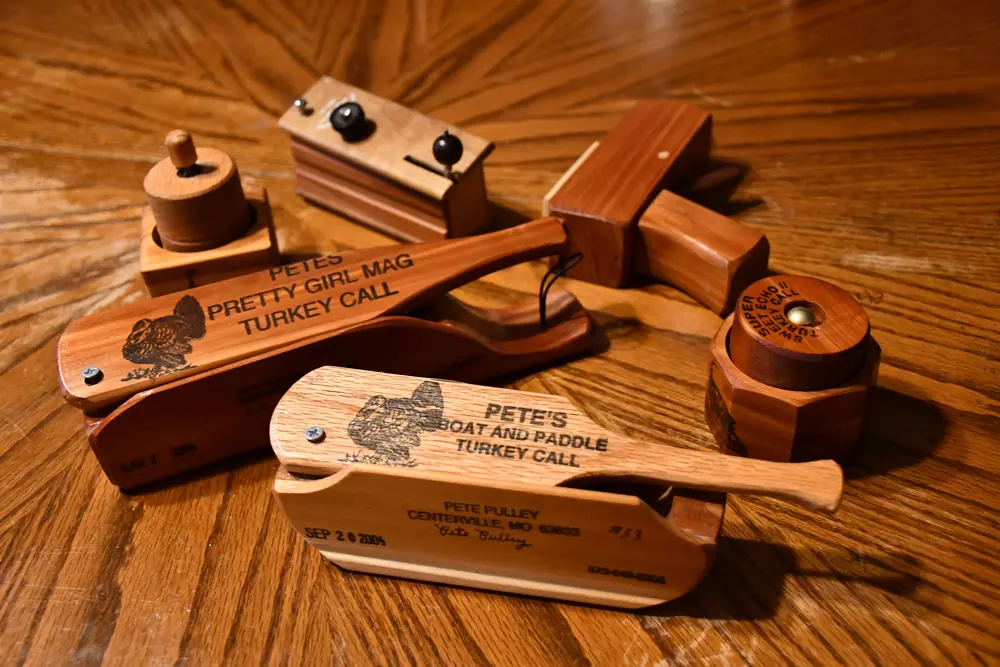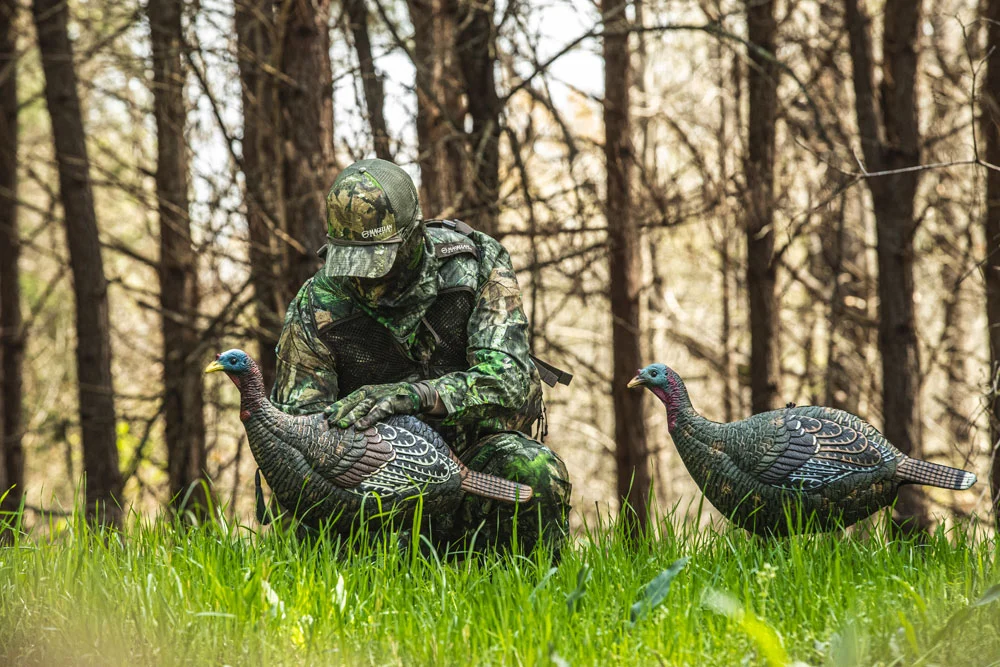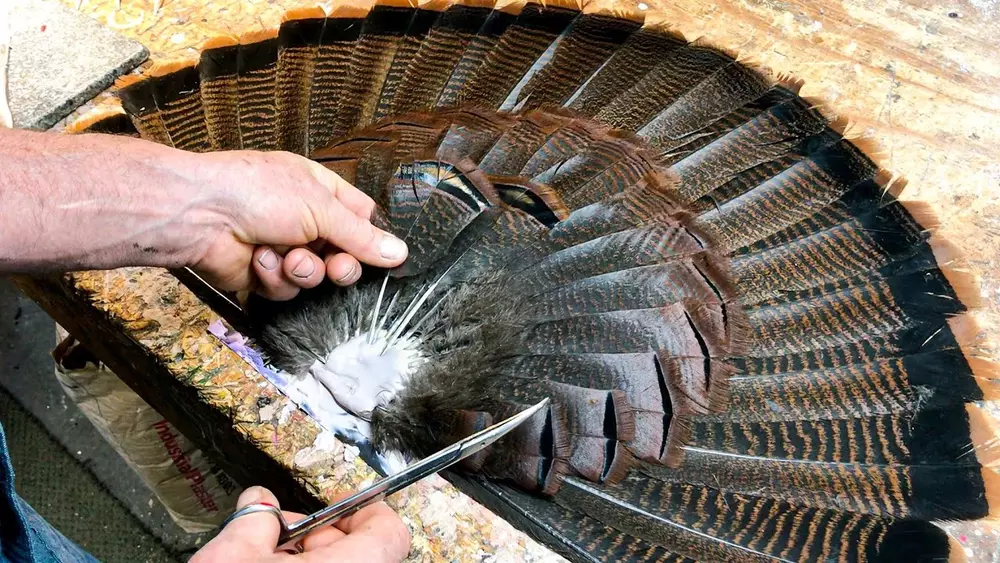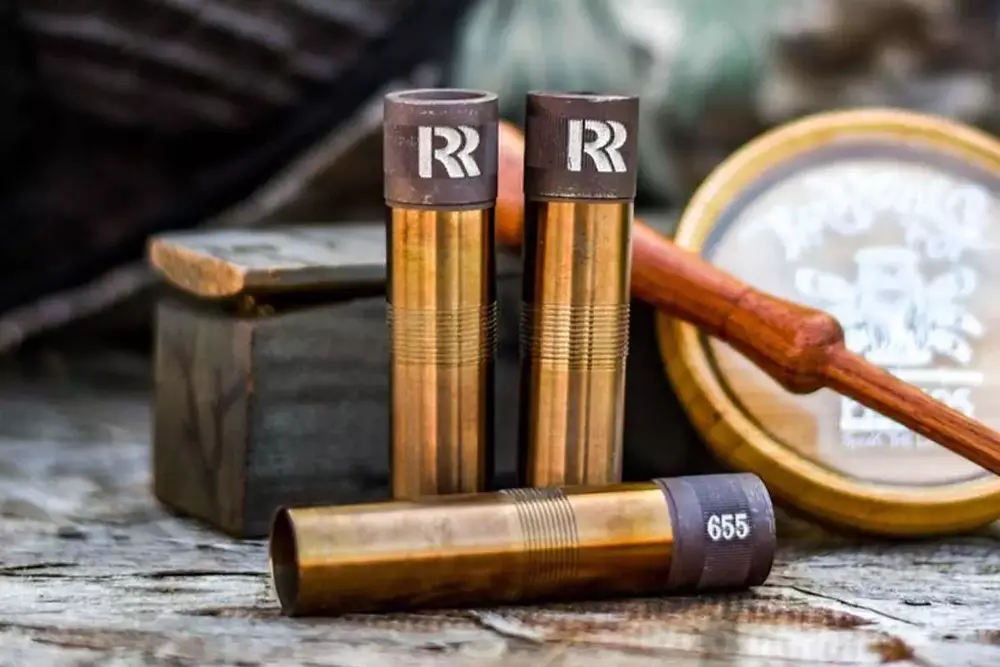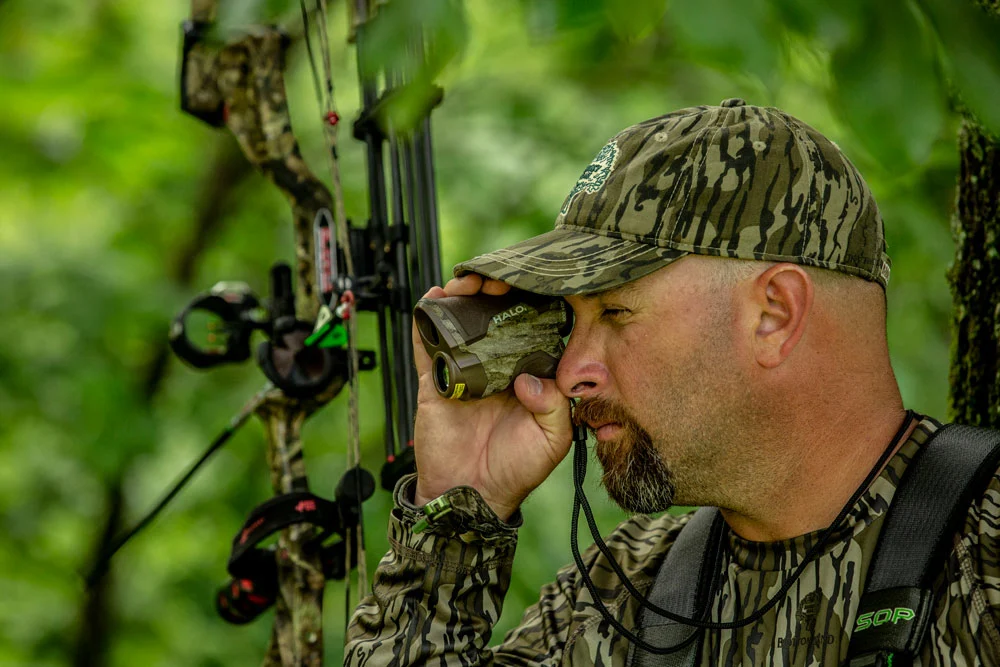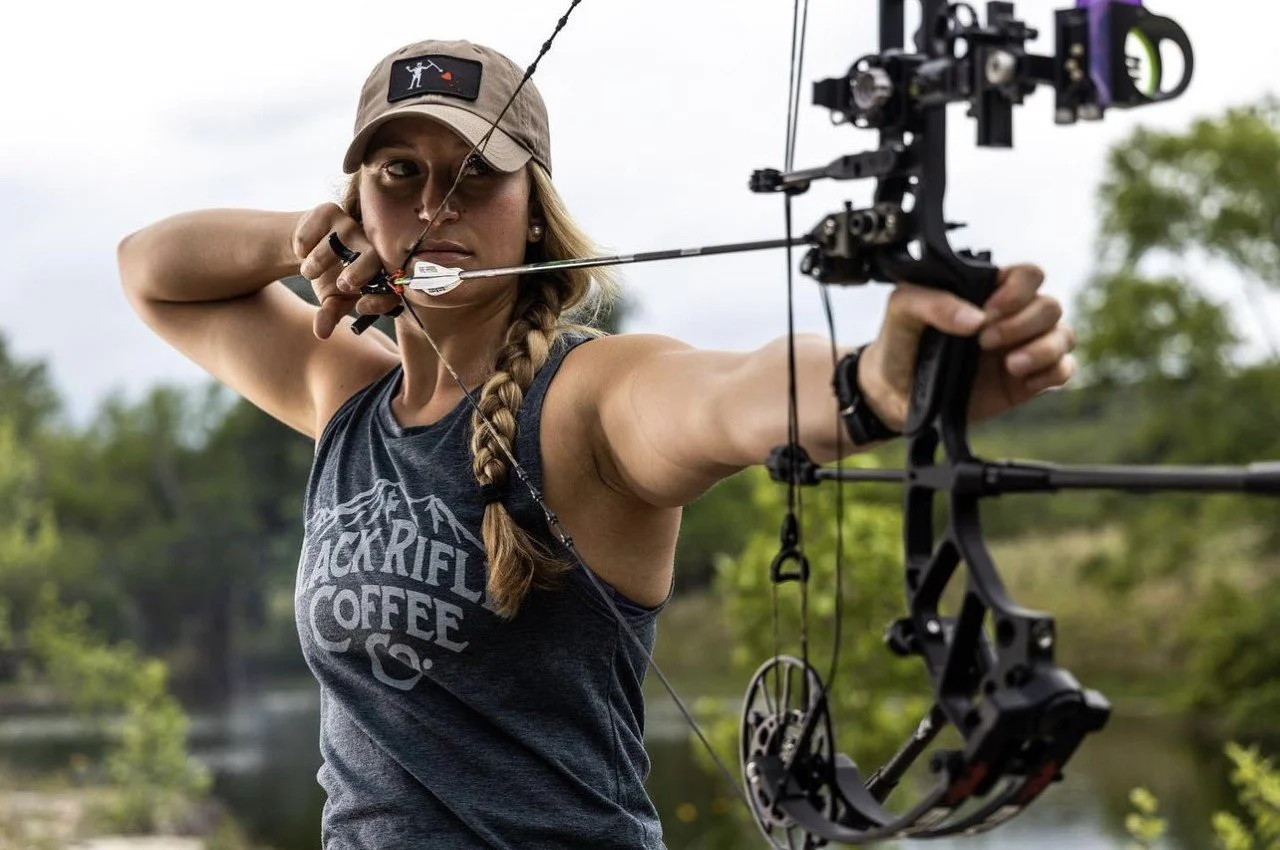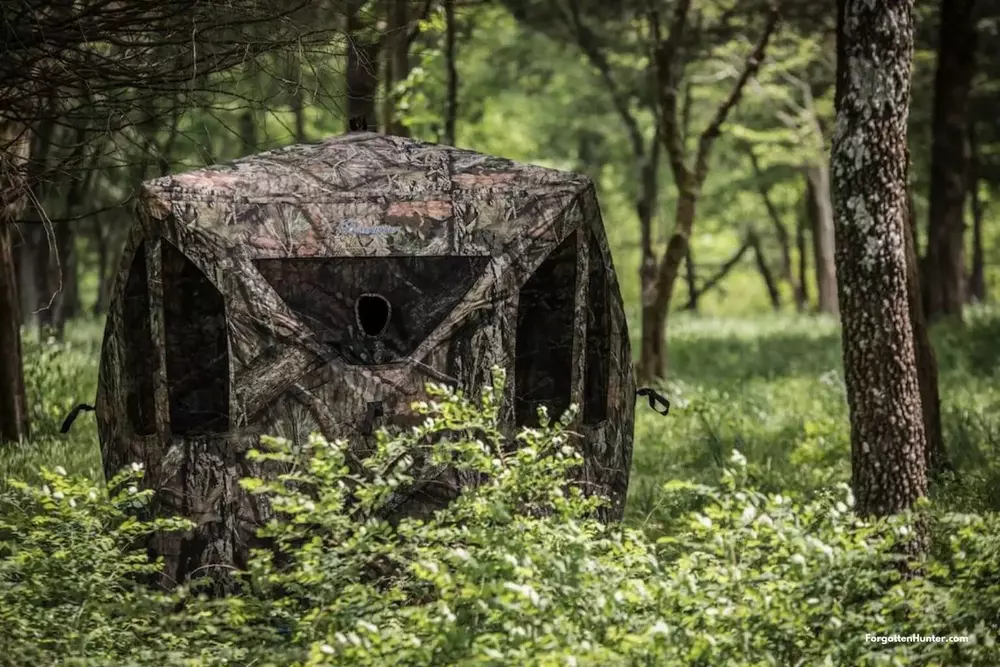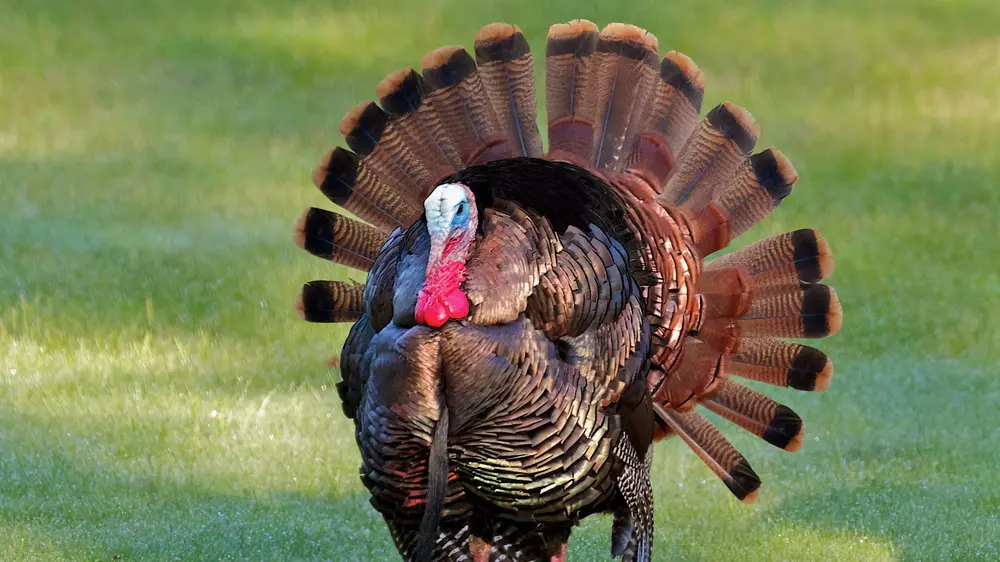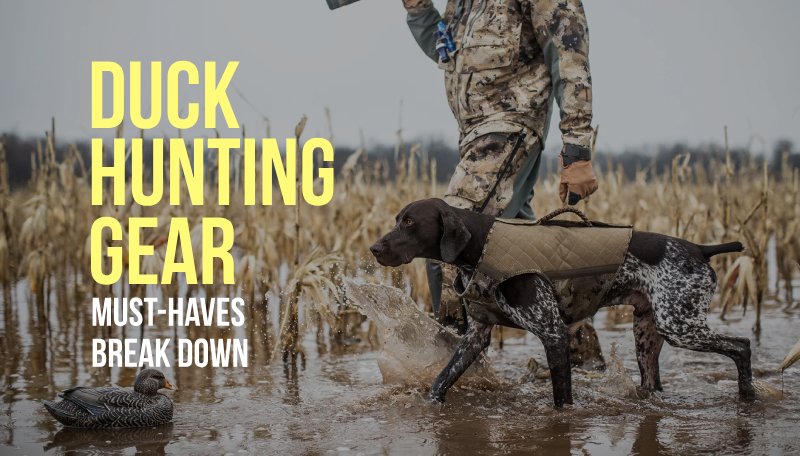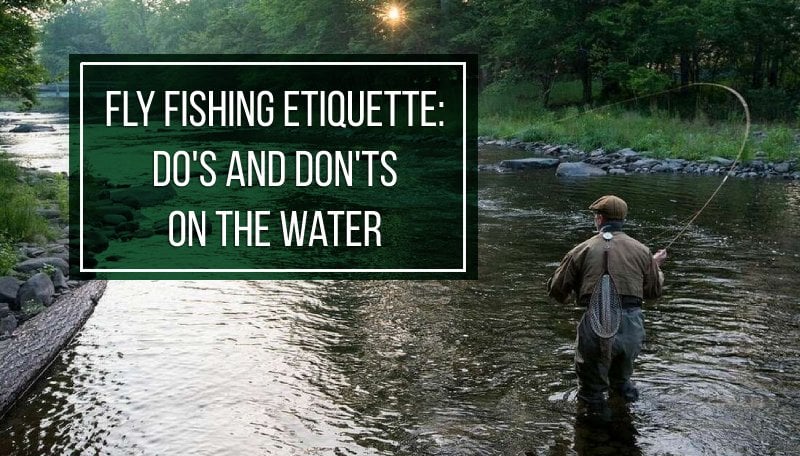Last Updated on
Fall is slowly approaching, and the coveted turkey shotgun season won’t be long in coming. The earliest birds are preparing their bows, lucky Arizonans are already shooting arrows at gobblers and hens. It goes without saying that technique and knowledge are almost everything when it comes to the success of your hunting trip. Almost everything. Discarding the importance of gear would be very shortsighted, and we can’t neglect such an important tool in our possession. This article aims to shed light on the essential turkey hunting accessories that can significantly improve your chances of success in the field. We’ll leave the art of calling and strategically placing decoys for another time. Today, our sole focus is on turkey hunting accessories.
Table of Contents
Turkey Calls
Turkey Decoys
Tail Fans
Turkey Chokes
Rangefinder for Turkey Hunting
Bow Stabilizer
Hunting Blind
Projectiles for Turkey Hunting
Conclusion
FAQs
Turkey Calls
Turkey calls are the ultimate translators of the turkey hunters, though it might be more appropriate to call them conniving deceivers. On one hand, they’re the bridge that connects us to these majestic birds and allows us to communicate (to a certain extent). On the other hand, they are the very reason why so many hunters return from their hunting trips with bags full. Good for us, not so good for turkeys. These turkey hunting accessories come in several varieties, depending on the manner of sound production.
Let’s start with the Slate Turkey Call, or Pot Call as it’s often known. This handheld device, usually made from slate, glass, or other similar materials, requires a striker to operate. You draw the striker across the surface to create all manners of turkey sounds. The beauty of the Slate Call is its versatility. You can get anything from soft purrs to loud yelps, thus yielding the power to mimic a full range of turkey vocalizations.
The Box Turkey Calls are essentially two pieces of wood hinged together that you scrape to produce sounds. The magic of a Box Call lies in its ability to project sound over long distances. On a calm morning, the yelps and cuts from a Box Call can reach out and touch a gobbler’s heart from quite a significant distance. A well-tuned Box Call produces rich, resonant tones – a siren song for turkey’s ears.
Finally, we come to the Diaphragm Turkey Call. This thingy sits against the roof of your mouth, freeing up your hands for more important tasks like steadying your shotgun. It might take some practice to get used to it, but once you do, the rewards are immense. A Diaphragm Call can produce an incredible range of sounds, from soft clucks to aggressive cutting, making it one of the most versatile turkey calls in your arsenal.
It’s worth saying that mastering any of the calls is not an easy feat. Like the rest of the things, it takes practice. The price for the acquired proficiency is dozens of birds who never made it into your bag, having been scared away by the sound of a hunter-in-training. But nothing in this life comes free, skills included, and it pays off at the end of the day.
Turkey Decoys
Calling is great and everything, but it’s unlikely for a turkey to pursue the call till the very end. Sooner or later, they’ll need some physical evidence that the sound comes from another turkey. That is where turkey decoys enter the stage, or rather when the camera shifts to them. They’re your silent, motionless actors that complement your calling performance.
What exactly are they? Well, turkey decoys are essentially life-like models of turkeys that we use to trick real turkeys into coming closer. Their sole purpose is to mimic the presence of other turkeys, playing on the social nature of these birds to lure them into shooting range.
Now, let’s dive into the types of turkey decoys. First off, we have collapsible and noncollapsible decoys. Collapsible decoys are your best friend when it comes to portability. They can be folded down into a compact size, making them easy to pack and carry. Noncollapsible decoys, on the other hand, hold their shape all the time. While they may be a bit more challenging to transport, they often offer superior realism, which can make all the difference in convincing a wary tom.
Speaking of realism, let’s talk about hen decoys versus tom decoys. Hen decoys, designed to resemble female turkeys, play on a tom’s desire to mate, drawing him in with the promise of companionship. The thing is that a gobbler might lose interest if the hen doesn’t approach him in return. Tom decoys, however, tap into a different instinct – competition. A well-placed tom decoy can provoke a dominant gobbler into coming in for a fight, providing you with the perfect shot.
Of course, not all decoys are created equal. Some boast an incredible degree of realism, with detailed paint jobs, realistic feather patterns, and even true-to-life postures. These high-end decoys can fool even the most seasoned gobblers, making them worth their weight in gold. But remember, even plain turkey hunting accessories aren’t to be underestimated. Even a simple, well-placed decoy can work wonders in the right situation.
Turkey Tail Fans
Turkey Tail Fans, or simply “fans,” are the large, spread-out tail feathers of a turkey. When used correctly, they allow you to approach a strutting gobbler undetected. Why would you want to do that? Well, there is a whole hunting method called fanning or reaping.
Here’s how it works: You spot a gobbler in full strut, his tail fan spread out in a display of dominance, signifying his intention to mate. Slowly, you start crawling towards him, hiding behind your own Turkey Tail Fan. From the gobbler’s perspective, you’re an intruder, a rival male who stepped into his mating ground and needs to be punished. He lunges towards you, all his caution evaporated in the blink of an eye. That’s where you get him if you are fast enough.
Some hunters will say that fanning is a straightforward cheating. Instead of mastering the art of calling and placing decoys, you abuse the gobbler’s primal instinct with a simple disguise. But the core controversy of this hunting technique lies not in fairness, but inherent danger. You disguise yourself to look like a turkey from one side, so you risk getting treated like one. Hunters are known to shoot fellow hunters even without those disguised as game. But in this case, the chance of you getting shot in the face rises more than you’d want it to. Hunting on private grounds can somewhat mitigate the risk, yet the stories of accidental shooting on private land are not unheard of.
Turkey Chokes
Some aspects of shotguns are better known than the test. Everybody knows about their effectiveness in close range and big spread, but there is more to shotguns than that. The pattern and density of their spread are modifiable and we have choke tubes to thank for that.
So what’s a turkey choke tube? It’s a cylindrical piece that you screw into the end of your shotgun barrel to densify your shotgun’s blast pattern. Turkey chokes allow for making it tighter and denser than standard choke tubes. And when it comes to turkey hunting, that makes all the difference.
Do I need a denser blast pattern, you may ask? The answer is a resounding yes. Turkeys are tough birds. Really tough – their vital areas are small and well-protected, so you need a good number of pellets to hit the target to ensure a clean, ethical kill. And a turkey choke does exactly that. It concentrates your shot into a tight, hard-hitting cluster, increasing your chances of hitting a particular spot rather than maiming the bird.
There are several types of chokes, all with varying degrees of spread density:
Cylinder Choke: This is the most open type of choke, meaning it does not constrict the shot pattern at all. When a shell is fired from a shotgun equipped with a cylinder choke, the pellets spread out rapidly and evenly. It’s ideal for short-range shooting, say within 20 yards or so, where a wide spread is more beneficial than a concentrated blast. It’s not the case for turkey hunting, though, unless you expect the birds to be very close.
Improved Cylinder Choke: This one adds a slight constriction to your shot pattern, making it slightly denser than that of the Cylinder Choke. The pattern remains relatively wide, but the added density can improve the effectiveness of your shot. It’s a popular choice for upland bird hunting and can be effective for turkey hunting if the birds are within a moderate range, usually within 25 yards.
Modified Choke: With this choke, you start to see a significant tightening of the shot pattern. It provides a good balance between range and spread, making it a versatile choice for different hunting situations. For turkey hunting, it can be effective at ranges up to 35 yards. The Modified Choke offers a nice middle ground between the openness of the Cylinder chokes and the tight constriction of the Full Choke.
Full Choke: The go-to choice for many turkey hunters. This choke significantly constricts the shot pattern, resulting in a dense, concentrated blast. This tight pattern allows for longer-range shooting, often effective from 40 yards up to 60-70 yards. The Full Choke’s ability to maintain a tighter pattern at longer distances makes it ideal for turkey hunting, where precision and power are key to ensuring a clean, ethical kill.
Rangefinder for Turkey Hunting
Even the most seasoned hunters can find their skills tested when it comes to gauging distances accurately. Luckily, there is an invention that can accomplish this task with precision a person couldn’t dream of. A rangefinder.
In simple terms, a rangefinder is a device that measures the distance from itself to the target. This handy helper spares you the trouble of second-guessing your range estimations. Is the target within range? Too close? Too far? None of those questions will bother you anymore. With one press of a button, you’ll know exactly how far away your target is. No more opportunities missed. Just you, your shotgun, and the confidence of knowing you’ve got the distance right.
But wait, there’s more! Not only does a rangefinder give you the exact distance to your target, but it also trains your eye to better judge distances over time. There’s nothing more satisfying than being able to size up a situation with a quick glance, no gadgets required. But there will be a lot of learning before that moment comes.
Bow Stabilizer
A few weeks separate the majority of hunters from the beginning of the archery fall season. No time like the present to arm yourself with the best goods the industry has to offer. You definitely know about bows and arrows, but have you heard about bow stabilizers?
Long story short, a bow stabilizer is an accessory that attaches to your bow to, well, stabilize it. First, it reduces the bow movement during the draw and release. The last thing you want when you’re out in the field is for your bow to wobble and your shot to go wide.
Second, a stabilizer absorbs vibration. That means when you release your arrow, the shock won’t run up your arm and rattle your teeth. Your shot will feel smoother, and your aim will stay true.
Finally, a stabilizer balances your bow. With a stabilizer, your bow won’t tilt or lean, it’ll sit just right in your hand.
The benefits are too good to pass up, considering the fact you only need to buy one accessory.
Hunting Blind
Deceiving and luring birds to their doom might not be your thing. It’s fine, you can still be a turkey hunter. That is, if patience ranks amongst your virtues. Ambushers and stand hunters don’t actively call turkeys, instead waiting for the birds to come on their own accord. But turkeys boast excellent eyesight so you’d still need to be stealthy. And for that, you can turn to hunting blinds.
A hunting blind is essentially a hideout for hunters. Crafted from materials designed to blend into the environment, it gives you the perfect cover while you wait for that big tom to strut into range. Inside, you are protected from the bird’s sharp eyes and thus can shift, draw your bow or raise your gun, all without being detected.
But that’s not all. It usually takes a turkey many an hour to come to you, and since you aren’t actively calling or pursuing anyone, you’ll need to stay in one place. Add a disturbing drizzle into the equation and you get a recipe for a spoiled day. But not with a hunting blind by your side. Wind, rain, snow – you name it, inside your blind, you’re protected. Most hunting blinds are portable and easy to set up. You can pack them up, move to a new location and set them up again in no time. So, if the turkeys aren’t coming to your current location, you can gather your things and go to another one.
Projectiles for Turkey Hunting
Turkey Loads
Turkey loads are specially designed for turkey hunting. Turkeys are tough birds: their feathers are dense, and they have a muscular build. You need something with a bit of oomph to take them down. That’s why turkey loads are typically heavier and more powerful than regular birdshot.
Now, if we look at the general range for shotgun shells used for bird and turkey hunting, it falls between #1 (long-range ducks) to #8 (doves, quail, etc.). When it comes to turkey hunting, you want something in the middle, from #4 to #6. But wait, there’s more! Let’s switch gears and talk about broadhead arrows. These aren’t your regular arrows, folks. Broadhead arrows are designed with a larger, razor-sharp point, specifically for hunting game. And when it comes to turkey hunting, they can be a real game-changer. You can find a wide selection of turkey chokes in our brick-and-mortar store in North Richland Hills, Texas.
Broadheads
Let’s return to the archer’s squad. They have an even harder time landing precise shots, so all help is welcome. A broadhead arrow must just do the trick. Broadhead arrows are designed with a larger, razor-sharp point, specifically for hunting game. And when it comes to turkey hunting, they can be a real game-changer.
The wide cutting surface of a broadhead can cause significant damage, increasing your chances of making a quick and ethical kill, especially if you aim for neck or headshots.
Conclusion
The right combination of turkey hunting accessories can significantly boost your chances of success. You might not need all of them but having a few depending will certainly pay off. Whether you’re a seasoned hunter or a newbie, understanding the importance of turkey hunting accessories is pivotal. Remember, the key is not just about having the best equipment, but also knowing how to use it effectively.
Check out other hunting-related articles, compiled by the Gritr Outdoors Team:
- Must-Have Duck Hunting Gear for a Winning Season
- Must-Have Deer Hunting Gear for a Successful Season
- 5 Common Elk Hunting Mistakes to Avoid During Your Expeditions
- Hunting Gadgets: How Electronics Can Help Hunters
- 10 Best Hunting Books – Every Hunter Should Read in 2023
- Top 7 Hunting Places in North America
FAQs
What are the top accessories recommended for turkey hunting?
The top turkey hunting accessories will vary based on the method of hunting you plan to stick to. Generally, items like a turkey call, a comfortable and camouflaged hunting chair, decoys, turkey chokes, a good vest with plenty of pockets and a reliable shotgun sight are all beneficial.
What are the types of turkey calls?
The main types of turkey calls are slate calls, box calls and diaphragm calls. They all work differently but perform the same function – to trick a turkey into coming to you.
What types of chokes are the best for turkey hunting?
Full Chokes boast the most constricted shot patterns and provide a dense, concentrated blast. Considering the distance, they are the best choice for turkey hunting.

